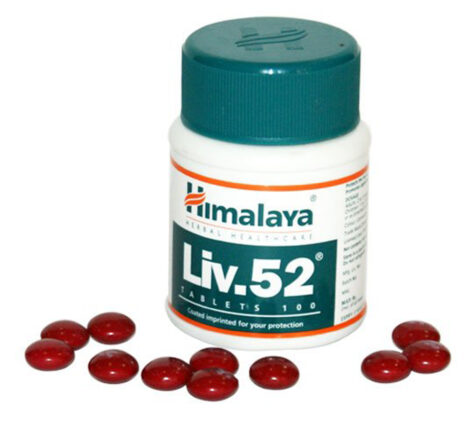The Role of IPR in the pharmaceutical industry
INTRODUCTION
The pharmaceutical industry is an integral part of our economy. It helps the health sector function and ensures the smooth production and trade of necessary drugs, medicines, and other medical products. With the increasing number of biotech companies and medical technology, inventions are occurring faster. These inventions require several approvals before introduction in the market as a new drug.
Intellectual property rights help in the protection of these inventions and pharmaceutical companies. It sets the foundation on which further technological or medical advancements take place. They could be patents, trademarks, copyrights, etc. Let us learn more about the role of intellectual property rights in the pharmaceutical industry.
IMPORTANCE
Let us briefly go through some of the reasons why intellectual property rights are essential for the pharmaceutical industry:
Economic Development and Fair Competition
In the past two decades, India’s economy has seen massive growth alongside development in the competition laws. Intellectual property rights ensure that profits for a particular invention or innovation reach the right hands. These further drives healthy and fair competition in the market and leads to better drugs and medicines. As a result, it benefitted the economy and strengthened research and development.
Protection of Invention
For every new drug in India, patent laws help protect the interests of the developers and incentivize them. With a supportive environment, the inventions are well-protected in the market. And even if there is an infringement of rights, sanctions, and regulatory measures are in place to deal with them.
Consumer Interest and Safety
A structured regime of intellectual property rights helps to protect the consumer interest as well. A patent comes to a fair evaluation and quality assurance, which allows the consumer to decide among the various options available.
PATENT LAW IN PHARMACEUTICAL INDUSTRY
The scope of patent law in India, especially related to the pharmaceutical industry, has always been debatable. More often than not, it seems stringent and restrictive. Primarily, it requires the inventions to be novel, inventive, and have industrial applicability as per the Indian Patent Act. Also, to qualify as a patentable invention, products have to pass the criteria of what inventions are not patentable, which is provided within Section 3 of the Patents Act, 1970.
Section 3(a) and Section 3(b) talk about inventions contrary to natural laws, frivolous or contrary to public order and morality, which cannot be subjected to a patent. Section 3(c) mentions that merely discovering a scientific principle or forming an abstract theory would not qualify within the act as a patent. These provisions seem straightforward, but some of the subsequent provisions have required interpretation by courts due to their prima facie restrictive nature or vague language.
Section 3(d) seeks to forbid the unjust long-term gains from inventions by increasing their scrutiny under patent laws. It restricts the patentability of an invention that may be a new form of a known substance or further use of it by considering it as the same. Any invention has to prove improved efficacy to qualify the patentability criteria.
In Novartis AG v. Union of India [1], the Supreme Court of India interpreted Section 3(d), stating that it primarily deals with pharmaceutical products. It explained that this provision helps let only those inventions qualify that are of an adequate standard and genuine while seeking to prohibit repetitive patenting or unjust long-term gains by increased patent term. Although India has often been criticized for its strict patent laws, the qualifying inventions have to demonstrate a considerable number of better results. In this case, the court did not find any considerably improved efficacy in the drug from its earlier variant.
Thus, although the patent laws may seem restrictive for the pharmaceutical industry, their purpose is to ensure more structure and organization in patenting.
Similarly, Section 3(e) talks about combination inventions. This provision seeks to filter the non-efficient inventions. Merely combining two or more components, not resulting in any invention or benefit, cannot qualify to be patentable. It has to prove its efficacy.
In Lallubhai Chakubhai Jarivala v. Shamaldas Sankalchand Shah[2], the Bombay High Court held that mere admixture interpretation could be considered merely admixing known elements, expecting a beneficial effect. It ruled out the possibility of including unknown substances, as their properties are not known.
ROLE OF PHARMACEUTICAL INDUSTRY IN COVID-19 PANDEMIC
During the COVID-19 pandemic, India had strengthened the necessary approval procedures to ensure that production and sale do not face any hurdles in the crisis, thus exhibiting the crucial role of the pharmaceutical industry as the backbone of our country. Let’s briefly discuss the relationship between intellectual property rights and the pharmaceutical industry during the pandemic.
Section 84 of the Patents Act talks about compulsory licenses. The regulatory authority and government can grant authorization to a person to produce some patented product after qualifying the prerequisites without the patent holder’s permission. Although this provision has international recognition and practice, its use in India is quite rare.
Section 92(3) provides that compulsory licenses may be issued in cases of national emergency, extreme urgency, or public non-commercial use. This provision can observe the interplay between the pharmaceutical industry, intellectual property rights, and the government.
India witnessed the worst phase of the COVID-19 pandemic in May 2021. There was a shortage of several essential drugs, vaccines, and medical equipment. Referring to the provisions for compulsory licensing, the Delhi High Court in Rakesh Malhotra v. Govt. of NCT, India & Ors.[3] firmly advised the Central Government to consider reaching out to several manufacturers ramping up the production of essential drugs and medicines.
TRADEMARK LAW IN PHARMACEUTICAL INDUSTRY
Apart from Patent law, it is trademark law that applies closely to pharmaceutical industries. In India, trademark registration is necessary for pharmaceutical brands and their drugs. The pharmaceutical industry is also one of the largest industries to register for most trademarks.
Section 9(a) of the Trademarks Act, 1999 bars the registration of such trademarks that are not distinct. The essence of trademark law is that goods and services shall distinguish from each other so that the consumers do not recognize different brands as confusing or deceptive.
The major problem that pharmaceutical brands face is non-distinctiveness. Since most drugs’ names are based on their usage, different pharmaceutical companies have confusingly similar marks.
As per Section 11 of the Trademarks Act, 1999, no subsequent or new trademark can be similar to an already registered trademark. The rationale behind this provision is identical to the essence mentioned earlier, not to cause confusion among consumers and enable ease of differentiation. Thus, it imposes a challenge on pharmaceutical brands.
Pharmaceutical companies in recent times have started to adopt specific other measures to distinguish their drugs from the drugs of other companies. These measures mainly include non-traditional marks, by which a particular shape, color scheme, or trade dress is used.
Some notable cases where the Delhi High Court has granted injunction to various pharmaceutical companies for using identically similar trademarks are Alkem Laboratories Ltd. v/s Danish Healthcare Pvt. Ltd. & Anr., Sanofi India Limited v/s Ridley Life Science Private Limited., Sun Pharmaceuticals Industries Ltd. v/s Nukind Healthcare P. Ltd & Anr. among others.
In the famous Cadila Health Care Ltd. v. Cadila Pharmaceuticals Ltd.[4], the Supreme Court of India determined specific characteristics for finding if two trademarks are deceptively similar, including the nature of the marks, nature of products, and a class of purchasers, etc.
CONCLUSION
With intellectual property rights development, almost all pharmaceutical companies have started to focus on their intellectual property strategies. They have to comply with all intellectual property laws while maintaining their profitable growth. Hence, research and development play a significant role that can help ascertain other strategies, including pricing, competition, and marketing. As we read in the article, Indian IP laws usually follow a balanced approach while dealing with the pharmaceutical industry. Though they may seem restrictive, the companies must ensure that they act in the interest of the general public and consumers.
References:
[1] Novartis AG v. Union of India, (2013) 6 SCC 1.s
[2] Lallubhai Chakubhai Jarivala v. Shamaldas Sankalchand Shah, (1934) 36 BOMLR 881
[3] Rakesh Malhotra v. Govt. of NCT, India & Ors., W.P. (C) 3031/2020.
[4] Cadila Health Care Ltd. v. Cadila Pharmaceuticals Ltd, 2001 (5) SCC 73.
Authored by: Anurag Kushwaha; Student, Department of Law, PIMR, Indore
Disclaimer: This article is intended to provide general guidance to the subject matter. For any specific advice/corrections, write to [email protected]




